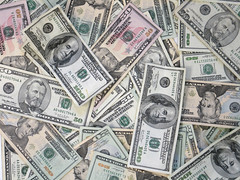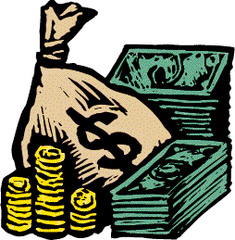| 4086182260 | Define excretion | Removal of waste products from the body |  | 0 |
| 4086186096 | What are the 4 components of the urinary system? | 1. kidneys
2. ureters
3. bladder
4. urethra |  | 1 |
| 4086190363 | What hormones does the kidney produce? | 1. calcitriol
2. erythropoietin
3. renin | | 2 |
| 4086196817 | What are the effects of calcitriol? | 1. promotes Ca2+ absorption in the small intestine
2. promotes Ca2+ reabsorption in the kidney |  | 3 |
| 4086217202 | What are the effects of erythropoietin? | promotes red blood cell synthesis |  | 4 |
| 4086221305 | What are the effects of renin? | 1. aldosterone secretion
2. vasodilation by angiotenisin-2
3. Na+ retention by the kidney
4. increased blood pressure |  | 5 |
| 4086194778 | What hormones does the kidney respond to? | 1. ADH (antidiuretic hormone)
2. aldosterone | | 6 |
| 4086228807 | What are the effects of ADH? | water retention by the kidneys |  | 7 |
| 4086233350 | What are the effects of aldosterone? | Na+ reabsorption and K+ excretion by the kidneys |  | 8 |
| 4086239214 | How does the kidney maintain blood composition? | 1. by reabsorbing important ions such as Na+, Cl-, HCO3-
2. by excreting H+ ions and waste products | | 9 |
| 4086248438 | How does the kidney maintain blood volume? | by retaining or excreting water | | 10 |
| 4086251139 | How does blood volume relate to blood pressure? | blood is a liquid tissue confined by blood vessels; thus an increase in blood volume leads to an increase in blood pressure | | 11 |
| 4086284949 | How does the kidney help to regulate blood pH? | by excreting H+ ions | | 12 |
| 4086287698 | How does the kidney synthesize glucose? | via gluconeogenesis ("making new glucose"); making glucose from amino acids |  | 13 |
| 4086254628 | What ion influences the movement of water? | Na+ aka sodium | | 14 |
| 4086259614 | An increase of sodium ions in the blood leads to? | water being drawn into the blood and a raise in blood pressure | | 15 |
| 4086265203 | What are 3 metabolic waste products that the kidney eliminates? | 1. urea
2. creatinine
3. uric acid | | 16 |
| 4086313288 | What are the names of the blood vessels that service the kidneys? | renal arteries and renal veins |  | 17 |
| 4086321378 | What are the names of the tubes that drain urine from the kidney? | ureters |  | 18 |
| 4086325797 | The outer part of the kidney is called? | the renal cortex |  | 19 |
| 4086327415 | The inner part of the kidney is called? | the renal medulla |  | 20 |
| 4086331593 | What is the functional unit of the kidney? | the nephron |  | 21 |
| 4086333265 | How many nephrons per kidney? | one million |  | 22 |
| 4086338138 | Four microscopic blood vessels are associated with each nephron. Name them | 1. afferent arteriole
2. glomerulus
3. efferent arteriole
4. peritubular capillary |  | 23 |
| 4086352701 | What is the difference between the afferent and efferent arterioles? | 1. the afferent arteriole delivers blood to the glomerulus and is the larger of the 2
2. the efferent blood takes blood away from the glomerulus and delivers it to the peritubular capillary |  | 24 |
| 4087219880 | What is the glomerulus? | an unusually shaped cluster of fenestrated capillaries |  | 25 |
| 4087325657 | What are fenestrated capillaries? | leaky capillaries with pores |  | 26 |
| 4087367013 | Why are the glomerular capillaries leaky? | to allow substances to be filtered out of the bloodstream | | 27 |
| 4087226862 | Where does the peritubular capillary run? | around the kidney tubule |  | 28 |
| 4087230604 | What are the 5 parts of the nephron (in order from first to last?) | 1. glomerular capsule; 2. proximal convoluted tubule; 3. loop of Henle; 4. distal convoluted tubule; 5. collecting duct |  | 29 |
| 4087331172 | What blood vessels are associated with the glomerular capsule? | afferent arteriole (B)
efferent arteriole (A)
glomerulus |  | 30 |
| 4087371580 | What is a cortical nephron? | a nephron with its loop of Henle within the renal cortex |  | 31 |
| 4087376089 | What is a juxtamedullary nephron? | a nephron with its loop of Henle extending deep into the renal medulla |  | 32 |
| 4087384646 | The glomerular capsule contains 2 types of cells. What are they? | 1. simple squamous epithelium
2. podocytes |  | 33 |
| 4087400677 | Podocytes rest on top of the glomerulus; why do these cells have so many extensions? | together with the glomerulus, they make up the filtration membrane |  | 34 |
| 4087412386 | What type of cells are found in the proximal convoluted tubule? (PCT) | simple cuboidal epithelium with microvilli |  | 35 |
| 4087417550 | What is the function of the microvilli on cells of the PCT? | it increases the surface area of the apical portion of the cell |  | 36 |
| 4087429693 | What type of cells are found in the distal convoluted tubule? (DCT) | simple cuboidal |  | 37 |
| 4087449631 | The DCT has 2 types of cuboidal cells; what are they? | 1. intercalated cells: control pH by excreting H+
2. principal cells: contains receptors for ADH and aldosterone | | 38 |
| 4087433233 | What type of cells are found in the loop of Henle? | 1. descending limb: simple squamous
2. ascending limb: simple cuboidal |  | 39 |
| 4087442209 | Why are nephrons only 1 cell thick? | so that materials can move across the thin walls easily | | 40 |
| 4087495096 | What does "juxtaglomerular" mean? | "next to" the glomerulus | | 41 |
| 4087498249 | What is the juxtaglomerular apparatus? | specialized cells (macula dense) of the DCT that are connected to the afferent arteriole; they monitor blood flow and pressure- if pressure or volume too low, they secrete renin |  | 42 |
| 4087516473 | What is renin? | a hormone that triggers the formation of angiotensin-2 and aldosterone |  | 43 |
| 4087521799 | What does angiotensin-2 do? | 1. it tells the adrenal cortex to release aldosterone
2. it tells smooth muscle around arterioles to constrict
both result in an increase in blood volume and pressure |  | 44 |
| 4087581208 | What are the processes involved in urine formation? | 1. glomerular filtration
2. tubular reabsorption
3. tubular secretion |  | 45 |
| 4087607583 | What is filtration? | the movement of a liquid under pressure through a filter |  | 46 |
| 4087611784 | What is the main driving force for glomerular filtration? | blood hydrostatic pressure |  | 47 |
| 4087618170 | What substances can not be filtered out of the glomerulus? | 1. blood cells
2. plasma proteins
both are too large | | 48 |
| 4087621116 | What is glomerular filtrate? | 1. water
2. ions (Na+, Cl-, and others)
3 nutrients (glucose, amino acids)
4. wastes (urea, creatinine, uric acid) |  | 49 |
| 4087629908 | What is the glomerular filtration rate? | the amount of filtration that takes place in one minute | | 50 |
| 4087633198 | What factors can affect glomerular filtration? | 1. myogenic mechanisms (local control in response to higher or lower flow in the afferent artery)
2. hormonal control (renin)
3. sympathetic control | | 51 |
| 4087643600 | If blood flow in the afferent arteriole slowed down due to low blood volume, what substance is secreted? | renin by the juxtaglomerular apparatus |  | 52 |


























































































